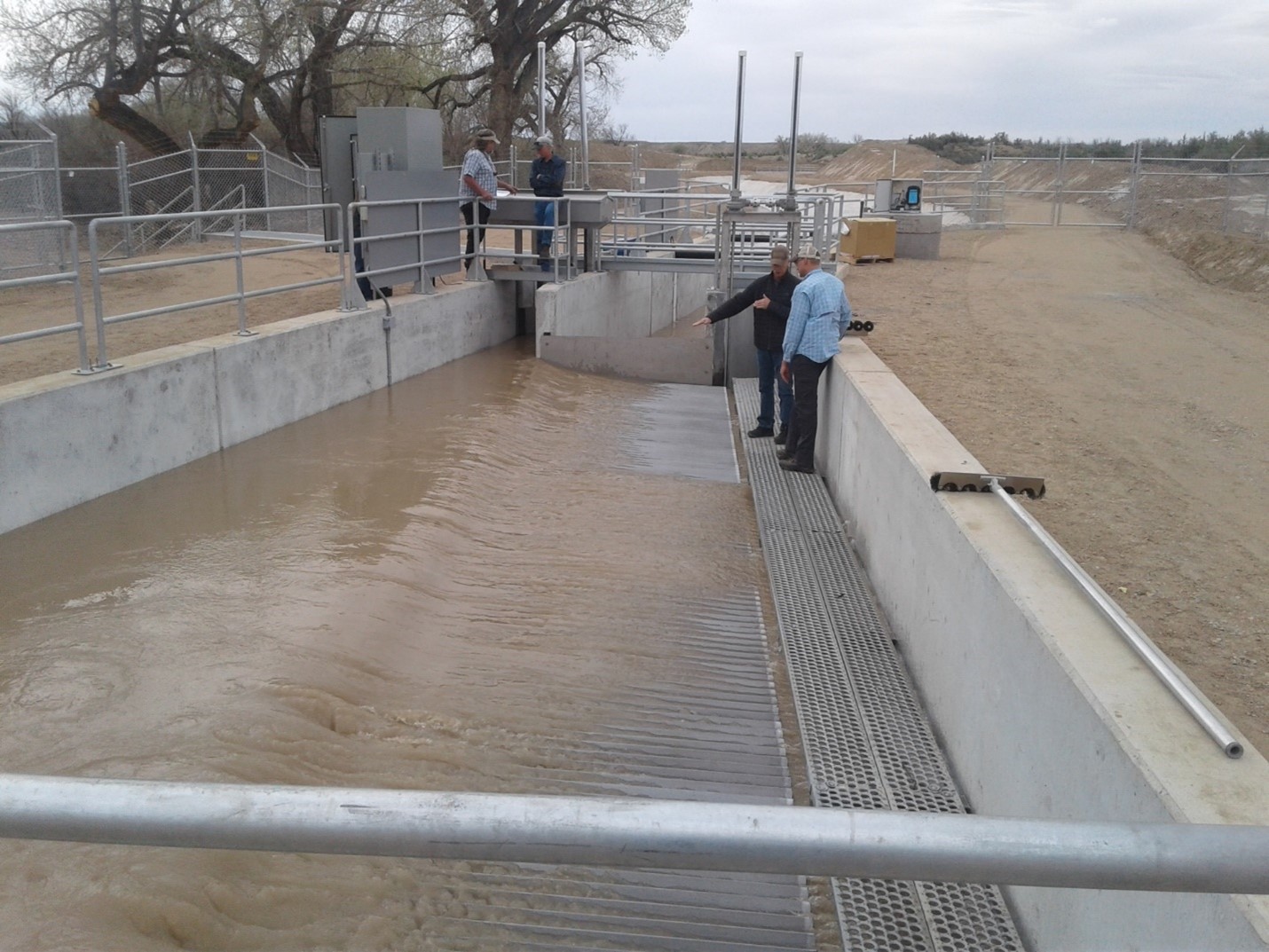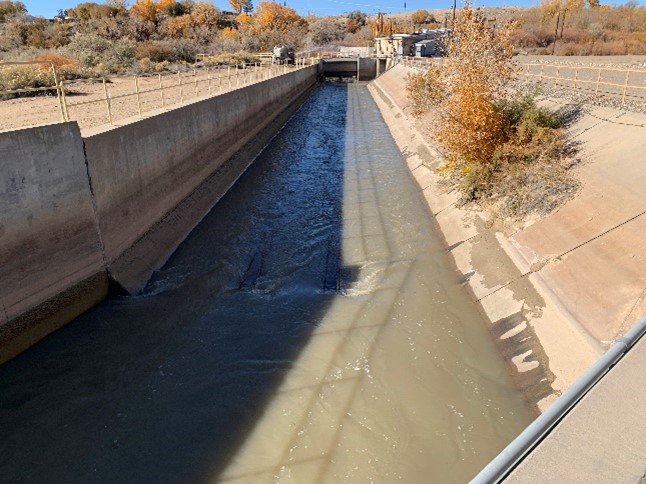 Hogback Canal prior to the installation of the fish weir and where fish were getting entrained.
Hogback Canal prior to the installation of the fish weir and where fish were getting entrained.
Protecting and responding to threats of the Colorado River endangered fishes (Colorado pikeminnow, razorback sucker, bonytail, and humpback chub) are an important part of the Bureau of Reclamation’s mission. Threats such as fish entrainment in water diversions, have long been recognized by resource managers as a threat to native, especially endangered and threatened fish in the Colorado River Basin.
Fish entrainment is the unwanted passage and loss of fish through a water intake, for example, when fish are transported with the flow of streams, creeks or rivers that are being diverted for irrigation and other uses.
Though construction of fish screens has been historically the recommended alternative for protection of fish at most Reclamation projects, there are still many concerns that arise with the use of screens, especially when used in canals. The screens often become clogged with debris and are raised to allow the water to pass through. Additionally, smaller fish can become impinged on screens and in the aftermath are killed. Engineers and biologists have recognized that screen use in these waterways can be a significant source of increased, not decreased, fish entrainment and their usage needed to be re-evaluated.
In 2007, a team of Reclamation and U.S. Fish and Wildlife Service employees met to study the Hogback Diversion Canal on the San Juan River within Navajo Nation lands in New Mexico, to modify the structure to prevent the loss of endangered fish at this diversion facility. This canal on the San Juan River was a major source of fish entrainment; fish either became entrained into the water diversion intake or became impinged on the intake screen. The team developed and evaluated various proposals to modify the canal to deliver water and also eliminate or drastically reducing the entrainment of fish.
The most cost effective and efficient proposal was to construct a 550-foot thin-crest weir, which is essentially a type of non-passable barrier that is placed in flowing waters, to direct the movement of fish. A weir is historically used for fishing practices in a variety of ways, but Reclamation engineers developed a way to implement the idea to prevent entrainment. The proposed weir would run at a very shallow angle from one bank of the Hogback Canal to the other and allow a few inches of water to flow over the crest of the weir wall and into the canal for diversion. Fish and debris would be moved along the weir and through automated gates into a return channel back to the river’s flow. The Hogback Canal fish weir was constructed in 2014 and subsequent testing showed that between 95-100% of the fish, depending on species and size, were successfully diverted back to the river and not entrained, which is remarkable when compared to other methods of preventing entrainment.
“The fish weir is a win-win for water users and the fish it prevents from becoming entrained,” said Fish Biologist Mark McKinstry. “The weir allows water to be diverted in a way that prevents fish from becoming entrained and it also helps divert sediment that otherwise would accumulate in the canal.”

With the success of the Hogback weir, the concept was discussed for other canals throughout the Colorado River Basin, such as the Green River Canal in Utah, which had similar entrainment concerns. For many years, the Green River Canal had no way to prevent endangered fishes from entering. Reclamation engineers felt that that they could even improve the Hogback design by adding a perforated panel to the crest of the wall that would further prevent fish from passing over the top. With the new design, about 90% of the water flowing over the weir wall falls through thousands of tiny holes punched in the panels, it then flows downstream in the canal for use by farmers. The other 10% of the water–and anything inhabiting it—continues to flow over the panel and into a return channel leading back to the Green River. This project was another success for fish and irrigators.
With the success of these projects, the fish weir has become a critical component of future Reclamation projects. When completed, the Navajo-Gallup Water Supply Project in New Mexico will include approximately 300 miles of pipeline, two water treatment plants, 19 pumping plants and multiple water storage tanks. As part of the project’s San Juan Lateral, Reclamation is now making plans to incorporate the retired San Juan Generating Station (SJGS) water conveyance system as the intake structure on the San Juan River and that will require protection from fish entrainment.
“One of the critical components of the intake design, whether new or by using existing facilities, is the installation of a fish barrier to prevent the entrainment of endangered or threatened species,” said Four Corners Construction Office Manager Bart Deming. “Having worked closely with Mark and his team and having witnessed first-hand the success of the Hogback fish weir with protecting fish, we are planning to use a design similar to the Hogback Canal intake, which is located downstream of the SJGS intake. The fish weir not only mitigates fish entrainment, but it has an additional benefit of reducing the volume of river sediment that would otherwise be pumped up to the SJGS reservoir.”

The success of Reclamation’s innovation will continue to enhance the safety of endangered fish and still allow water to be diverted for various uses. Now the fish weir is a sought-out innovation not only throughout Reclamation, but across the nation, as other construction companies have requested information on how they can incorporate the fish weir into their structures moving forward.
The Denver Technical Service Center built a working model to demonstrate how the SJGS’s fish barrier will work. Check out the video here: https://youtu.be/5rGxKg1fLjk


